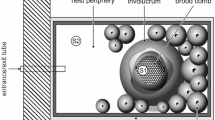Abstract
Drone congregations are a ubiquitous phenomenon described in several species of stingless bees and extensively studied in the honeybee, Apis mellifera. In meliponaries of Scaptotrigona mexicana, it is usual to observe drones forming such congregations close to the nests, apparently waiting for a virgin queen for mating. We hypothesize that drones of this species, similarly to those of A. mellifera and the stingless bee Scaptotrigona postica, use olfactory signals to detect queens and evaluate their reproductive status. In both field and laboratory experiments, our results showed that S. mexicana drones were able to differentiate between virgin and physogastric queens. It seems that this ability to discriminate depends on the amount of 2-alcohols, since even though no differences were observed in the qualitative content between virgin and physogastric queens, these compounds were found in larger quantities in the virgin queens. Attraction is due to compounds found in the queen head, mainly 2-alcohols, where 2-nonanol is the most significant for drone attraction in field and laboratory bioassays and for eliciting a high drone antennal response.





Similar content being viewed by others
References
Abdalla, F., Jones, G., Morgan, D., Cruz-Landin, C. (2004) Chemical composition of the Dufour gland secretion in queens of Melipona bicolor (Hymenoptera, Meliponini). J. Braz. Chem. Soc. 15, 1–5
Alcock, J., Barrows, E.N., Gordh, G., Hubbard, J., Kirkendall, L. (1978) The ecology and evolution of male reproductive behaviour in the bees and wasps. Zool. J Linn. Soc. 64, 293–326
Ayala, R. (1999) Revisión de las abejas sin aguijón de México (Hymenoptera: Apidae: Meliponini). Folia Entomol. Mex. 106, 1–23
Ayasse, M., Engels, W., Lübke, G., Francke, W. (1999) Mating expenditures reduced via female sex pheromone modulation in the primitively eusocial halictine bee, Lasioglossum (Evylaeus) malachurum (Hymenoptera: Halictidae). Behav. Ecol. Sociobiol. 45, 95–106
Ayasse, M., Paxton, R.J., Tengö, J. (2001) Mating behavior and chemical communication in the order Hymenoptera. Annu. Rev. Entomol. 46, 31–78
Baeckström, P., Bergström, G., Björkling, F., He, H.-Z., Högberg, H., Jacobsson, U., Guo-Qiang, L., Löfqvist, J., Norin, T., Wassgren, A. (1989) Structures, absolute configurations, and synthesis of volatile signals from three sympatric ant-lion species, Euroleon nostras, Grocus bore, and Myrmeleon formicarius (Neuroptera: Myrmeleontidae). J. Chem. Ecol. 15, 61–80
Cruz-López, L., Morgan, D. (1995) Chemical investigations of aggregation behavior of Triatoma bugs (Hemiptera: Reduviidae). J. Chem. Ecol. 21, 2069–2078
Duffield, R.M., Wheeler, J.W., Eickwort, G.C. (1984) Sociochemicals of bees. In: Bell, W.J., Cardé, R.T. (eds.) Chemical of insects, pp. 387–428. Chapman and Hall, London
Engels, W. (1987) Pheromones and reproduction in Brazilian stingless bees. Mem. Inst. Oswaldo Cruz Rio de Janeiro 82, 35–45
Engels, W., Engels, E., Lübke, G., Schröder, W., Francke, W. (1990) Volatile cephalic secretions of drones, queens and workers in relation to reproduction in the stingless bee, Scaptotrigona postica. Entomol. Gen. 15, 91–101
Engels, E., Engels, W., Lübke, G., Schröder, W., Francke, W. (1993) Age-related patterns of volatile cephalic constituents in queens of the neotropical stingless bee Scaptotrigona postica Latr (Hymenoptera, Apidae). Apidologie 24, 359–548
Galindo-López, J. C. (2008) Factores que influyen en la formación en la congregación de zánganos en Scaptotrigona mexicana, Thesis, El Colegio de la Frontera Sur, Mexico
Gerling, D., Velthuis, H.H.W., Hefetz, A. (1989) Bionomics of the large carpenter bee of the genus Xylocopa. Annu. Rev. Entomol. 34, 163–190
Grajales-Conesa, J., Rojas, J.C., Guzmán, M., Rincón, M., Cruz-López, L. (2007) Cephalic and Dufour gland secretions of Scaptotrigona mexicana queens: Chemical composition and biological activity. Apidologie 38, 38–46
SAS Institute (2001) Proprietary Software Release 8.2. Cary, NC, USA
Kozlov, M., Zhu, J., Philipp, P., Francke, W., Zvereva, E., Hansson, B., Löfstedt, C. (1996) Pheromone specificity in Eriocrania semipurpurella (Stephens) and E. sangii (Wood) (Lepidoptera: Eriocraniidae) based on chirality of semiochemicals. J. Chem. Ecol. 22, 431–454
Malo, E.A., Castrejón-Gómez, V.R., Cruz-López, L., Rojas, J.C. (2004) Antennal sensilla and electrophysiological response of male and female Spodoptera frugiperda (Lepidoptera: Noctuidae) to conspecific sex pheromone and plant odors. Ann. Entomol. Soc. Am. 97, 1273–1284
Smith, B.H., Carlson, R.G., Frazier, J. (1985) Identification and bioassay of macrocyclic lactone sex pheromone of halactine bee Lasioglossum zephyrum. J. Chem. Ecol. 11, 1447–1456
van Honk, C.G.J., Velthuis, H.H.W., Röseler, P.F. (1978) A sex pheromone from the mandibular glands in bumble-bee queens. Experientia 34, 838–839
Wheeler, J.W., Duffield, R.M. (1988) Pheromones of Hymenoptera and Isoptera. In: Morgan, E.D., Mandava, N.B. (eds.) CRC Handbook of Natural Pesticides, pp. 159–206. CRC Press, Boca Raton
Acknowledgments
We thank Armando Virgen and Antonio Santiesteban for technical assistance and CONACYT (Mexico) for economic support provided by the research grant 52847.
Author information
Authors and Affiliations
Corresponding author
Additional information
Manuscript editor: Monique Gauthier
Attraction olfactive des mâles de Scaptotrigona mexicana envers les substances volatiles émises par les reines vierges.
Scaptotrigona mexicana /mâle/comportement sexuel/signal olfactif/EAG/Meliponinae
Olfaktorische Anlockung von Drohnen von Scaptotrigona mexicana durch von jungfräulichen Königinnen produzierte flüchtige Substanzen
Scaptotrigona mexicana /Drohnen/Verhalten/EAG/
Rights and permissions
About this article
Cite this article
Verdugo-Dardon, M., Cruz-Lopez, L., Malo, E.A. et al. Olfactory attraction of Scaptotrigona mexicana drones to their virgin queen volatiles. Apidologie 42, 543–550 (2011). https://doi.org/10.1007/s13592-011-0042-8
Received:
Revised:
Accepted:
Published:
Issue Date:
DOI: https://doi.org/10.1007/s13592-011-0042-8




